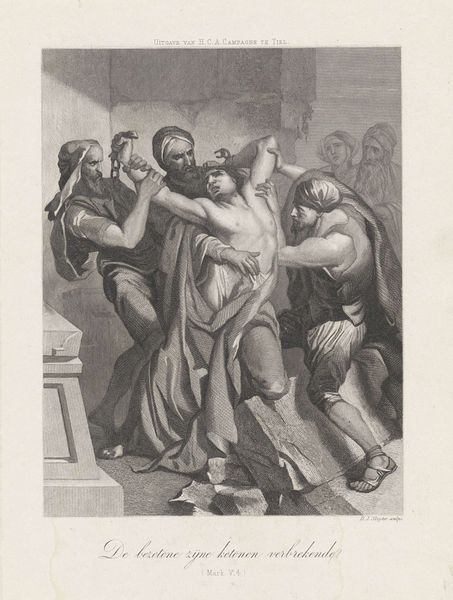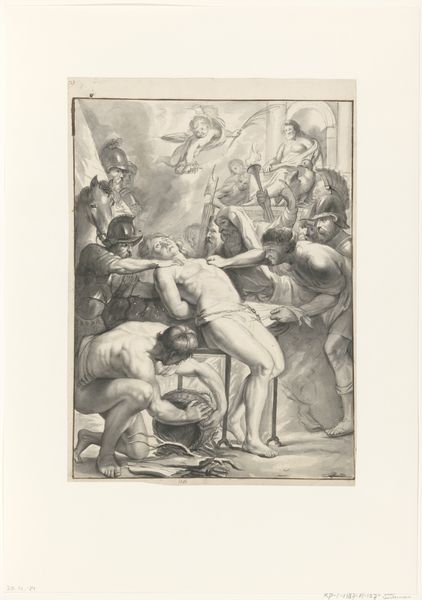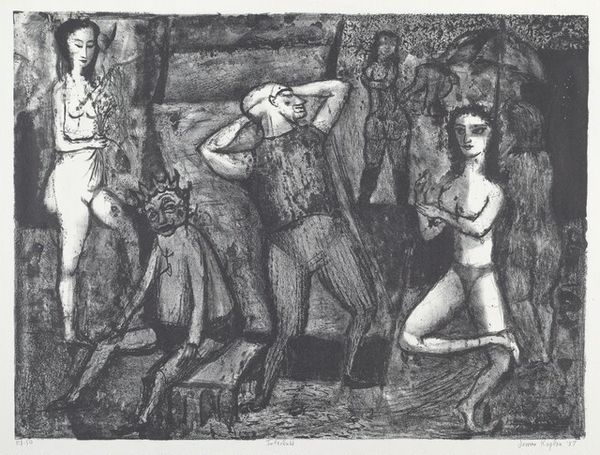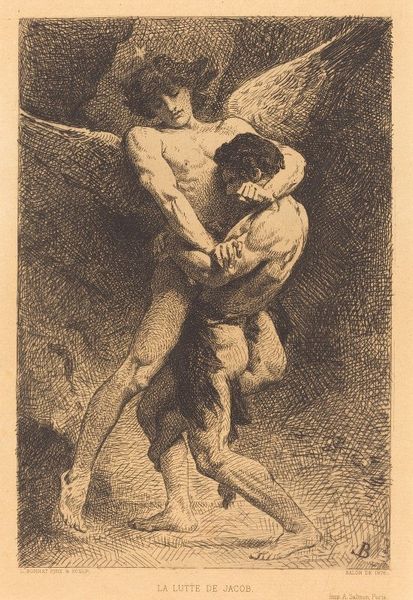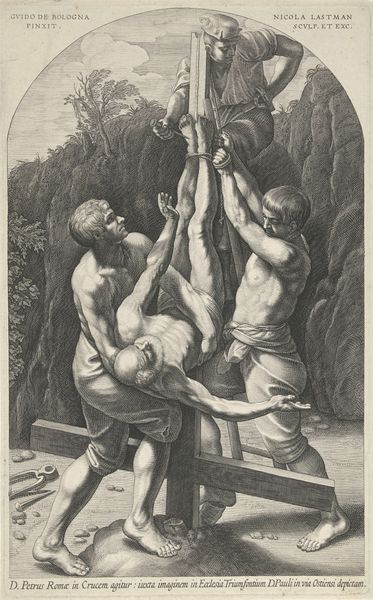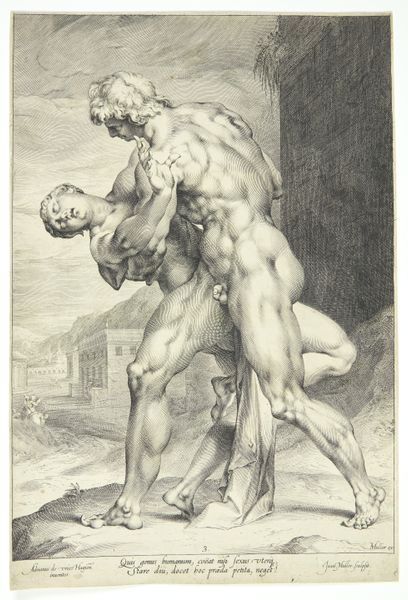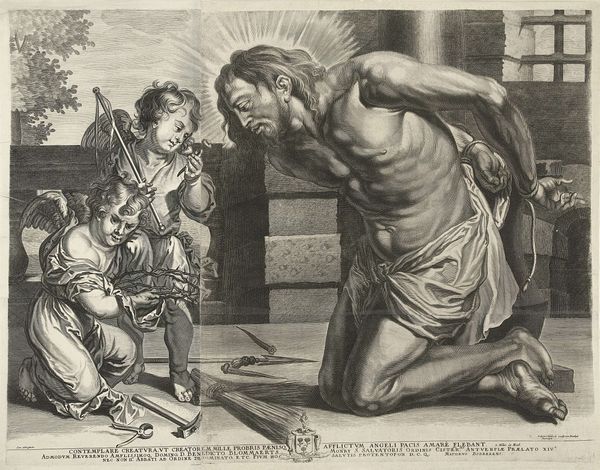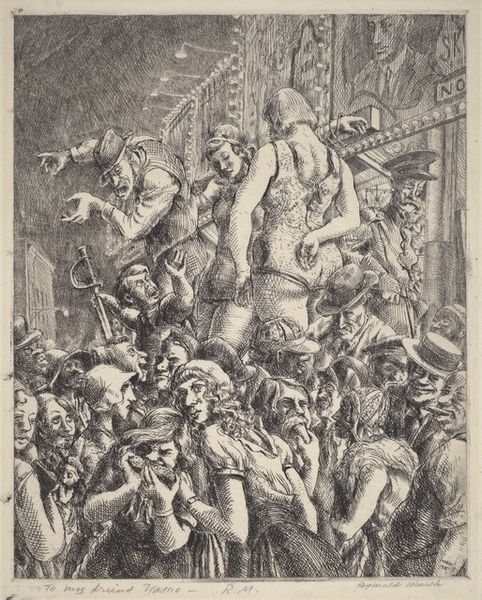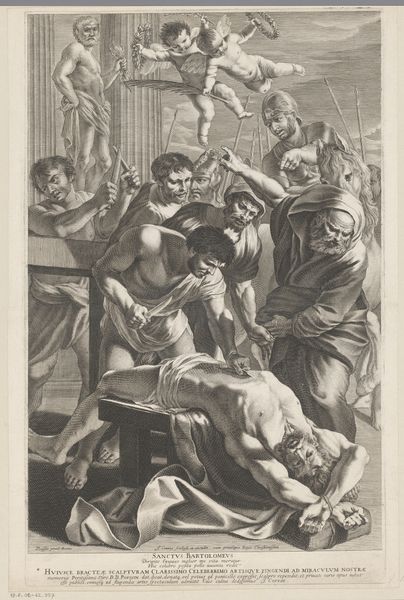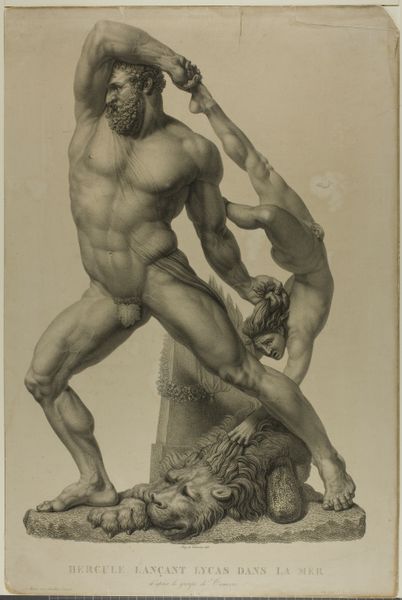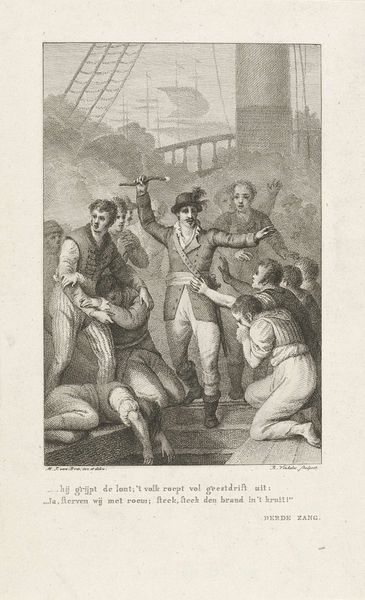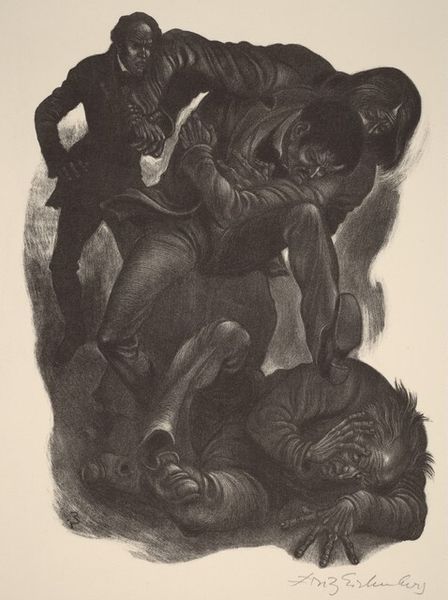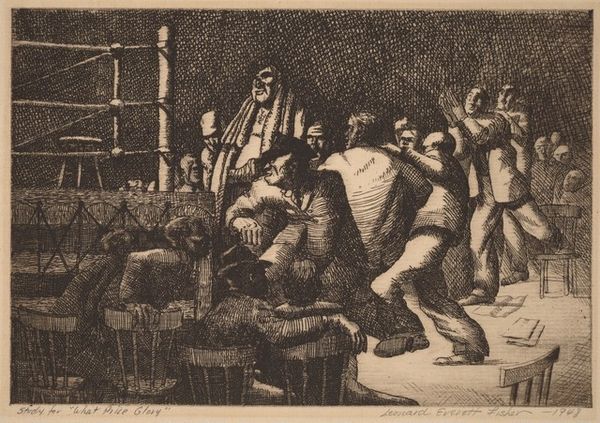
print, engraving
# print
#
figuration
#
genre-painting
#
engraving
#
realism
Copyright: National Gallery of Art: CC0 1.0
Curator: This engraving by Armando Sica, titled "Work," captures a scene of laborers seemingly hard at work. It is striking, isn't it? I’m interested in the depiction of labor itself; what captures your attention most? Editor: Well, the figures’ musculature really jumps out. It seems like an almost idealized representation of the working class, given the evident physical strain of these workers. Does that idealized vision affect our interpretation? Curator: Absolutely. Look at the careful attention given to each etched line defining the musculature. The physical effort rendered with such detail transforms labor into a display, almost fetishizing it. How does Sica elevate this physical labor? Is he romanticizing a socio-economic disparity? Editor: That's a great point. Maybe it speaks to a larger social commentary, even criticism? There is a rawness but, at the same time, it looks performative to me, and then I’m confused… Curator: Exactly! The artist uses the physical, manual act of the characters as an almost choreographic action. How would that change your perspective on social hierarchies, knowing that labor, its processes, and the exploited bodies, become the art’s main raw material? Editor: It definitely changes the way I view the engraving. I initially thought of the artist as presenting labor straightforwardly, even celebrating the worker, but it's a more complex relationship. I have never considered exploitation to be a component in interpreting visual work like this. Curator: Precisely. By carefully analyzing Sica’s artistic processes, from his choices of materials to the social setting, we unveil deeper meanings embedded within what first appeared as a conventional portrayal. It invites us to investigate what lies beneath its surface. Editor: Thanks. I will remember this analysis of process. This definitely provides a richer, much needed materialist framework to appreciate the socio-historical factors involved.
Comments
No comments
Be the first to comment and join the conversation on the ultimate creative platform.
